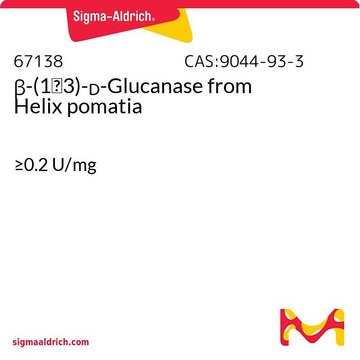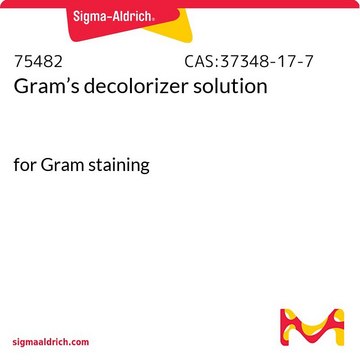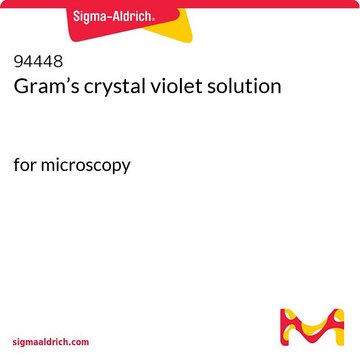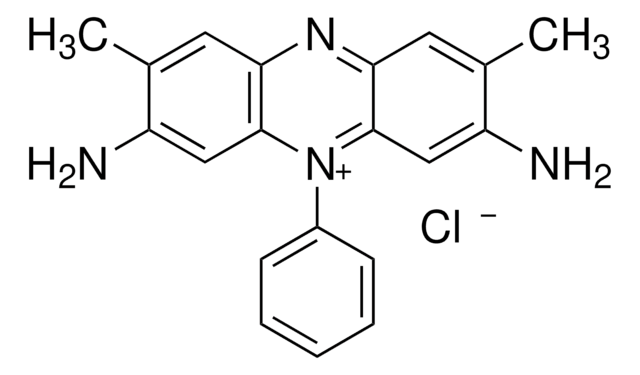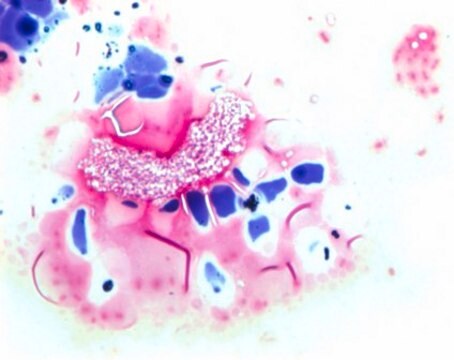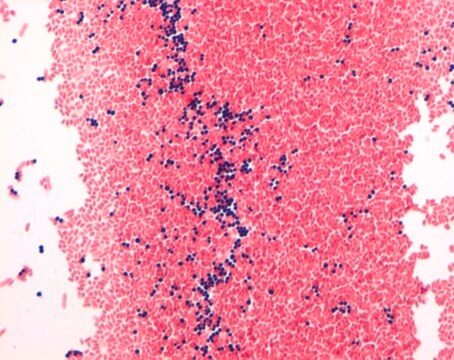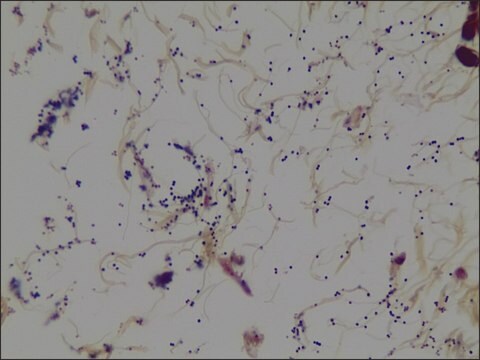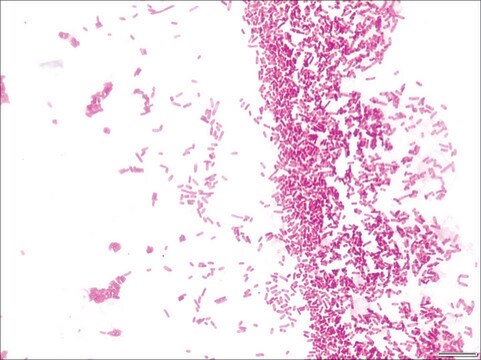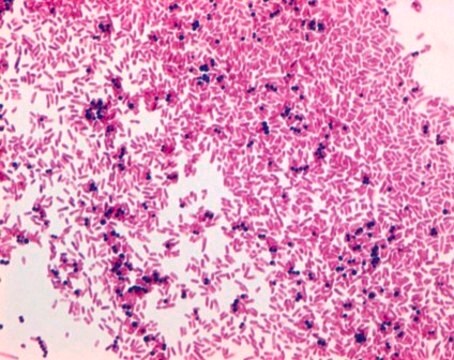77730
Gram Staining Kit
for microscopy, used for differentiation of bacteria on the basis of their gram nature.
Synonym(s):
Bacteria Staining Kit according to Gram
About This Item
Recommended Products
grade
for microscopy
Quality Level
Agency
according to GB 4789.30-2016
product line
BioChemika
shelf life
limited shelf life, expiry date on the label
technique(s)
microbe id | staining: suitable
antibiotic activity spectrum
Gram-negative bacteria
Gram-positive bacteria
application(s)
clinical testing
environmental
food and beverages
pharmaceutical
suitability
bacteria
General description
Application
Components
94448 Gram′s crystal violet Solution
90107 Gram′s iodine Solution
75482 Gram′s Decolorizer Solution
94635 Gram′s safranin Solution
Not finding the right product?
Try our Product Selector Tool.
Signal Word
Danger
Hazard Statements
Precautionary Statements
Hazard Classifications
Aquatic Chronic 3 - Carc. 2 - Eye Irrit. 2 - Flam. Liq. 2 - STOT SE 3
Target Organs
Central nervous system
Supplementary Hazards
Storage Class Code
3 - Flammable liquids
Flash Point(F)
68.0 °F
Flash Point(C)
20 °C
Personal Protective Equipment
Regulatory Listings
Regulatory Listings are mainly provided for chemical products. Only limited information can be provided here for non-chemical products. No entry means none of the components are listed. It is the user’s obligation to ensure the safe and legal use of the product.
PDSCL
Please refer to KIT Component information
PRTR
Please refer to KIT Component information
FSL
Please refer to KIT Component information
ISHL Indicated Name
Please refer to KIT Component information
ISHL Notified Names
Please refer to KIT Component information
Cartagena Act
Please refer to KIT Component information
JAN Code
キットコンポーネントの情報を参照してください
Choose from one of the most recent versions:
Already Own This Product?
Find documentation for the products that you have recently purchased in the Document Library.
Customers Also Viewed
Laevis frog Oocytes in Murine Models of Melanoma, Traumatic Brain Injury and
Experimental Skin Wrinkling
Articles
Vibrio Detection
Clostridia are relatively large, gram-positive, rod-shaped bacteria that can undergo only anaerobic metabolism.
On the Trail of Campylobacter
For microbiologists the most fundamental stain was developed in 1884 by the Danish bacteriologist Hans Christian Gram.
Our team of scientists has experience in all areas of research including Life Science, Material Science, Chemical Synthesis, Chromatography, Analytical and many others.
Contact Technical Service